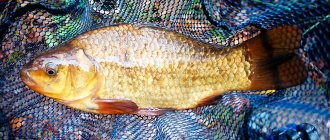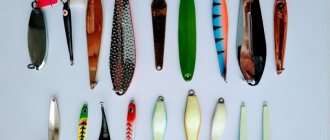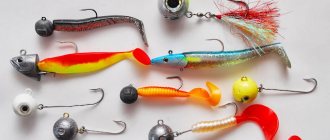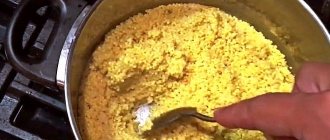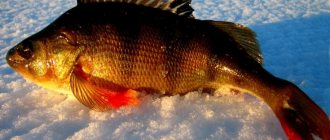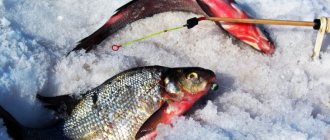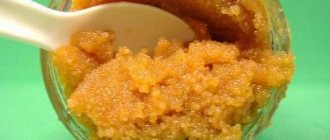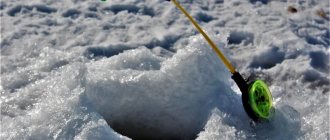Low water level, a large amount of aquatic vegetation, rapid current - these are the words that can describe the state of many rivers in August. And anglers will have to fight with all this in order to get a sufficient number of bites and decent results as a result. But in addition to equipment, gear and accessories, the fisherman will need a clear understanding of the processes that occur under water, as well as a couple of tips and tricks from experienced anglers who have “eaten the dog” on river fishing. Garbolino UK leader Darren Cox talks about them on the pages of the Angling Times. The angler recently visited Warwickshire Avon and the visit resulted in two stunning barbel weighing 22lb.
“Catching large fish in summer, abundantly overgrown rivers is quite a challenge! In order to purposefully catch, getting bite after bite, you need to clearly understand the actions and habits of the fish, because it is now far from being in those places that may seem obvious at first glance.
Tip 1. Choosing the right fishing point
Hot summer time is by no means the best period for fishing. As the temperature of the water increases, the amount of oxygen contained in it decreases commensurately, and therefore the first thing the fisherman needs to do is to find areas that are maximally saturated with oxygen. These can be water areas close to dams and embankments, rapids and rifts, as well as points at which mixing of jets and oxygen saturation occurs.
I prefer to fish in relatively shallow areas with a pebble or hard sand bottom. It is here that encounters with typical river species such as barbel, chub and ide are most likely. A large amount of oxygen, a hard bottom, as well as the presence of vegetation and shelters nearby (and there will definitely be some) are the key components of success.
By the way, about shelters - all kinds of fallen trees hanging over the water, thickets of vegetation and reeds, as well as other shelters are excellent places for fishing. They are not exposed to direct sunlight and are safe for fish, and therefore bites will not take long to arrive. By the way, on my last fishing trip I caught barbel close to the vegetation. The first barbel, weighing 11 lb 14 oz, made five trips to the bait before I managed to hook it. Indescribable feelings!
Bait
To catch large fish, you will have to weed out small bites using bait. To do this, you need to choose a bait that will be too tough for small fish. Such bait can serve as:
- corn (1-5 grains per hook);
- peas (1-5 peas per hook)
- the worm crawls out (whole, or at worst half);
- pearl barley (also a few grains per hook).
- boilies;
- frog (in case of catching catfish).
Please note that in order to really catch big fish you will need high-quality large hooks. No. 10 is quite a suitable option. Put on so many grains of bait at once that it is almost completely filled, just leave a little space (about one pea) so that when a large fish bites, the bait has somewhere to move and free up the sting for the fish to hook. If the bait is quite hard and the fish may not pierce it to the point of the hook when biting, you can leave the point bare, literally 1-3 mm, or pierce the bait and hide the point back into it.
The best way to catch large fish is to use a tackle with a hair on which the bait is placed, while the hook remains free and the fish is hooked on its own.
Tip 2. Choosing gear
If you're out fishing for barbel on the river, you might want to heed the advice of experienced fishermen who recommend using fairly heavy-duty gear - say, a short 2.25-pound blank and a main line with a breaking load of about 15 pounds. I prefer to enjoy the process of fishing, and therefore use more delicate tackle. For example, on my last fishing trip I used a Maxima model with a 6-pound test as my main line, as well as a leader with a diameter of 0.23 millimeters.
Of course, a six-pound fishing line is not strong and durable enough to cope with a trophy fish on its own, and therefore a fairly soft, astringent rod blank helps here. With its help, it is much easier and more effective to dampen fish jerks, which, in turn, allows you to use more delicate equipment.
Someone will smile - they say that you can’t really control the trophy with overly delicate tackle, but the barbels I caught say the opposite - if you work with the tackle correctly, even the trophy has no chance.
Tip 3. Choosing fishing tactics
Both the float tackle and the feeder - you need to be prepared for any development of the situation! That day I had both a bottom and a float rod in my arsenal, but the fishing location I had chosen and the presence of vegetation in it did not allow me to effectively retrieve it.
Despite the fact that the bottom rod showed greater efficiency in this situation, allowing me to catch the first barbel with its help, I believe that, in general, the float rod is more effective in most situations. The main merit here lies in the possibility of a natural presentation of the hook with bait, thanks to which the fish will not be wary and the bite will not be long in coming.
We are not even talking about catching fish - sometimes it is enough to understand in which horizon the fish is located and where the bites are occurring in order to accurately determine the location that is promising for fishing and pick up the key to the fish. In this situation, a voluminous, clearly visible dome-shaped balsa float is the best solution that allows you to clearly control the wiring process and timely notice a bite.
Another trick is to use bait correctly. If you are fishing near aquatic vegetation, snags, trees and other strong places, you should try to lure the fish into clean waters that are beneficial for the angler using food. Otherwise, immediately after the bite, the trophy will rush for cover - a cliff is almost inevitable! An alternative way to develop the situation is to force the fishing, using coarser and more powerful gear and not allowing the fish to go into the snags, but this does not always work.
Fishing with a rod
Fishing with a float rod in the current
Selecting a location
The first thing you need to start fishing with is choosing a catchable place. Where can you expect a good catch? A good place is characterized by the presence of a rich diet (for fish). That is, where the fish have something to eat, more and more individuals will always be drawn up. In such places you can just sit and wait until the fish comes. The main diet of peaceful fish consists of aquatic larvae and all kinds of crustaceans. They hide in the weeds, so if you cast bait near the edge of the thicket you can always expect a good bite.
Insects constantly fall from trees and coastal bushes, which fish also like. In addition, you can hide from a predator or find something edible in the flooded roots. So if you have an additional food source or shelter nearby (such as a tree or flooded bushes), this will only be a plus. Trees fallen into the water that create a reverse current, single stones, islands of reeds - all these are places that always attract fish like a magnet.
The edge of the reservoir is a place where there is a difference in depth, where you can also catch good fish. True, not everywhere the drop in depth comes close to the shore so that it can be caught with a fly float. And finally the places that gave me the most amazing catches. On the river, this is a turn in the channel with a sharp edge, near which low bushes grew. The depth sounding showed a slight increase in depth (on the lower edge) under a bush with a diameter of about two meters, in which the fish were gathering. On the pond, the most catchy place was also a small hole (compared to other depths - a difference of 20 cm) under an overhanging tree.
Groundbait and bait
Proper baiting of the fishing spot always improves the fishing result. The first, preliminary step is the starting feeding of the place before starting fishing. This is the most abundant feeding, designed to attract fish swimming “somewhere out there”. The average quantity is 5-10 balls the size of an orange. The second step is supplementary feeding during fishing. It involves feeding fish that have already swam and is designed to keep it at one point (namely where we fish). Perform every 10-15 minutes with one ball the size of a chicken egg. Constant feeding of one place has a very good effect. Already on the third day I managed to attract large bream and carp in this way.
Lastly, what baits can you use to catch fish? There are three types of bait - live, plant and artificial.
Live baits are among the most catchy and sought after by anglers. Hit live baits include maggots, bloodworms and dung worms. For the river we will also add a caddisfly larva. The best vegetable baits, in my opinion, are mastyrka, pearl barley, semolina, corn and wheat grains.
In summer, it is recommended to use vegetable baits and baits. Because as the water temperature rises, various algae begin to develop in it, which make up the main part of the fish’s diet. Fishing with a float rod in summer is best done using:
- corn (you can use sweet, steamed or fermented sour);
- test;
- crumb of bread or dough made from it;
- green peas;
- boilies are boiled dough balls with various flavors;
- mamalygi is an ordinary corn porridge;
- Mastyrki - dough made from peas and semolina;
- boiled pasta;
- undercooked potatoes;
- dry food for cats or dogs;
- boiled pearl barley.
Features of fishing on the current
To answer the question “how to fish with a float rod in the current,” many components must be taken into account. But, despite this, fishing on the river is more interesting and exciting than on reservoirs with stagnant water. Before you cast your fishing rod into the water, you should think about the choice of bait. Depending on the conditions, the mixture is selected according to several parameters: color of bait; number of living components; weight; optimal size.
Determine for yourself what kind of fish you are going to catch, and then choose the appropriate bait. The mixture to attract river fish, naturally, must be heavy and held in one place for a long time. The most advantageous place for fishing is a section of the river with the presence of a shell at the bottom, which retains the particles of the mixture for a long time. This constantly attracts fish to the area. The next thing to think about is rigging a float rod in the current. It must be said right away that long and thin floats are very ineffective in this case.
On a river with a slow current, equipment is used that facilitates the rapid delivery of bait to a certain place where fishing will be done, but at the same time it should not complicate the simplest manipulations with a hook. If there is a strong current, you can fix the fishing rod in one place without making sudden holds. The bait should drag along the bottom or remain completely in place.
The first of them is a design with a float, the load capacity of which must be at least two grams. If the fishing depth is more than 4 meters, then a float with a carrying capacity of about 14 g is used, which is mounted on a fishing line whose diameter is 0.12-0.16 mm. The weights are distributed in the simplest way. It is based on the fact that the main load is 90 percent of the weight, and the secondary load is only 10%, since there will be practically no manipulation. This option is suitable if the depth is approximately the same throughout the entire swim.
The selected rod should correspond to a test weight of about 15 g, since the equipment used is extremely massive. If fishing takes place on small rivers, you need equipment that allows you to keep the fish at one point. This is due to the length of the swim, which is very short. In this case, flat floats with heavy keels are effective. There are a lot of options for current strength and depth, as well as their ratio. Therefore, when going fishing, take with you a supply of sinkers and floats. And start making equipment on site. Do not waste time on this, because otherwise, you may leave with nothing.
Tip 4. Choosing the right bait
Summer fishing on rivers can be complicated by many things, one of which is the abundance of small fish at the fishing point. Very often, trophies are very careful and require the angler to use compact baits, but the ubiquitous bleak, roach and rudd simply do not allow it to reach the bottom, immediately tearing it off the hook.
In this situation, I approach the fishing process creatively. If you have to catch roach and chub, casters and maggots are used. If the list of trophies includes chub and ide, canned corn is used. On this fishing trip, I caught barbel using cubes of special Mainline Match Spicy Brown bait, feeding it with handfuls of boiled hemp grains and casters.
My decision was due to the fact that there was a large amount of small stuff present at the fishing point, and I had to be sure that the bait would reach the bottom and become accessible to the target fish.
Translation and adaptation for the Russian-speaking audience especially for Lovimvmeste.ru and the English Tackle online store.
Lure
If you really want to catch a big fish, you must understand that there must be bait and there must be a lot of it! It doesn't have to be expensive. Buy flour, halva, ground seeds, and various cheap cereals at the market. Brew at least half a bucket of this mixture. Purchased ready-made bait in packs can be used as an additive; one pack is enough, since if you use only it, it will be much more expensive.
The bait is brought by boat to the selected location or thrown using a special slingshot or rocket for casting bait. Wealthier fishermen use a special boat with a remote control, with which you can easily place bait and bait in the right place with an accuracy of a centimeter.
Don't think that bait will give results immediately. A well-fed place in the morning can give results only in the evening, at night or the next morning. In this case, bait must be added regularly.
Without bait, catching a big fish will be much more difficult; you will only have to hope for luck that the fish will be exactly in the place where your bait is.
